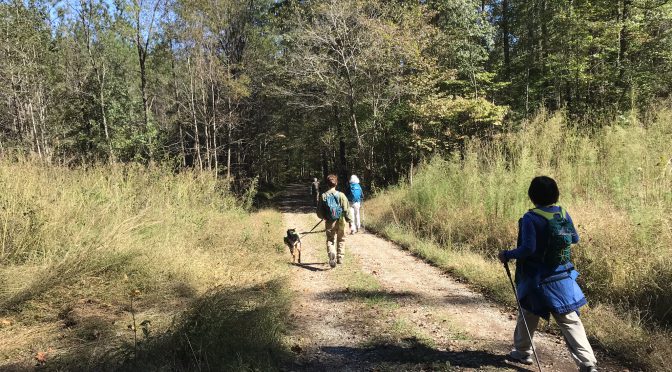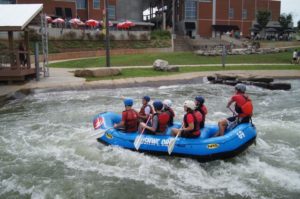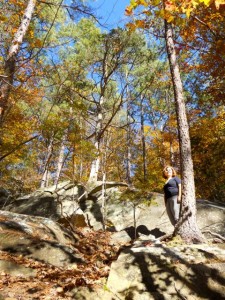Raleigh’s highly anticipated 3-mile House Creek Greenway is scheduled to open in March. Sunday, I took a little inspection tour. More about that in a sec. First, about that “highly anticipated” description.
In Raleigh’s rapidly expanding greenway network, 3 miles isn’t a lot. The system consists of close to 70 miles at this point, and this 3-mile stretch is dwarfed, sizewise, by another stretch also under construction: the 28-mile Neuse River Trail, which opened its first 6.5-mile stretch in October and expects to be completely done — from the Falls dam south to the Johnston County line — in 2013.
House Creek is being closely watched because it will link the 11-mile Crabtree Creek Trail to the north with the Reedy Creek Trail and 22 miles of connected trail to the south. That southern stretch runs from Southeast Raleigh through the N.C. State and Meredith campuses, through the N.C. Museum or Art, through Umstead State Park and into Cary — almost to Bond Park. Completion of House Creek will create 36 miles of connected greenway. Hence, “highly anticipated,” “closely watched,” “eagerly awaited,” “drooled over” — your pick.
So, will this 36-mile connection happen this spring? Looks like it.
From the northern trailhead, at Blue Ridge Road and Crabtree Valley Avenue, where it joins the Crabtree Creek Trail, the House Creek Greenway is paved for a mile and a half to the south.
Note for liability purposes: “paved” does not equal “open.” No signs are up, for one, and the bridge over House Creek lacks guardrails. There are, no doubt, other little things discernible only to the keen eyes of the contractor and the City of Raleigh that need to be finished before the greenway is deemed open for public use. This caveat applies to all subsequent mentions of trail being “paved.” We resume our post, in progress.
The trail remains unpaved for the next 0.6 of a mile south, through the box culvert tunnel under Lake Boone Trail up to where it crosses Horton Street. Pavement resumes at Horton Street and continues for 0.6 of a mile. The last 0.2 miles to House Creek’s southern trailhead, where it Ts into Reedy Creek Trail, also is unpaved.
The vital connection House Creek makes between Raleigh’s two longest stretches of existing greenway isn’t the only reason to eagerly anticipate/drool over this stretch of trail. Though it’s always within earshot of busy I-440 — and frequently within eyeshot, especially in winter — it has stretches with a wild, escapist charm. Between Horton Street and Lake Boone Trail the greenway snuggles up to a rocky stretch of House Creek where exposed rock defines much of the creek bottom. Three stretches pass through forest dominated by cell-tower-straight poplars, there’s a nice passage through grassy Glen Eden Pilot Park and a surprising number of hills help House Creek avoid the monotony common to many greenways, which tend to follow floodplains. A nice escape for walkers, a challenging 6-mile out-and-back workout for runners, a good urban bike ride for families, considering there is only one street crossing (albeit a busy one, across Blue Ridge Road at the north end).
Another quick caveat: Tempting though it may be, do not access the House Creek Greenway by parking in the Ridgewood Shopping Center lot at Ridge Road and Wade Avenue, and picking up the new Ridge Road spur. Signs in the QR parking lot warn against greenway users using the lot; from what we’ve heard, there’s some bite behind those words. A better bet: park at the N.C. Museum of Art off Blue Ridge Road at Reedy Creek Road and take the Reedy Creek Trail east.
Again, that is, after the trail officially opens.
View House Creek Trail in a larger map



